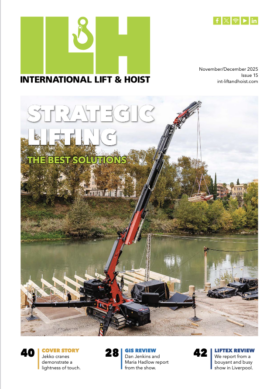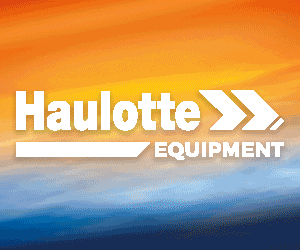)
Welcome innovation
Ross Moloney CEO of the Lifting Equipment Engineers Association (LEEA) looks at the role that technological innovation is having on the future of the lifting industry.
Our industry tends to fly under the radar but it has been around for thousands of years. Much of what the lifting equipment industry does has not changed significantly over the years: the physics and engineering are much the same as they were for building Stonehenge and the Pyramids.
However, the industry should always be seeking to modernise. This is very much the theme of LEEA’s 75th Anniversary year, which not only celebrates our past but looks firmly to the future – a big part of which is welcoming innovation.
Innovation can be seen to make a difference in our industry by making technology more accessible. Take Magnetic Rope Testing (MRT) for example. By giving visibility right through to a wire rope’s core, MRT can play a vital role in improving lifting sector safety. The first machines created to perform this task used components of a considerable size – the recorder and oscilloscope almost filled an entire room. This remained the case until the wire rope industry developed modern technology that works to exactly the same principle but is a fraction of the size. This makes MRT far more practical and therefore brings it to a broader user base. Improved safety by reducing the risk of failure is the upshot.
In addition to generating safety issues, lifting equipment failure leads to downtime that can incur eye-watering cost. No busy operation wants downtime but it is an inevitable fact that machinery goes wrong. Innovation is a powerful weapon in the armoury for minimising downtime. Intelligent, interconnected technology embracing the ‘Internet of Things’ will add value for companies offering services in the lifting equipment industry, allowing them to keep pace with sectors such as manufacturing, which are embracing this movement.
By allowing monitoring of status and reporting any faults in real time through remote diagnostics, ‘connected’ lifting equipment can help to ensure plant works optimally, uptime is maximised and preventative maintenance is enhanced, resulting in continued smooth operation.
Training too is benefitting from innovation, as Industrial Training International (ITI) has demonstrated its virtual reality (VR) crane simulator that gives a risk-free, safer means of training. This innovation features a VR headset that fully immerses the user into a crane cab, allowing them to run through a myriad of training scenarios – from a novice operator to complex situations. This received the Innovative Product of the Year Award at the LEEA Awards in 2018.
More great examples of lifting equipment innovation can be seen among the finalists of the 2019 LEEA Awards Innovative Product of the Year. They will be on show in the ITI sponsored Innovation Award Showcase at LiftEx 2019, where visitors can cast their votes on which product they think should win.
All industries are being challenged to innovate by pressures exerted by ‘mega trends’ such as achieving net zero carbon emissions. As we move to a circular economy, which requires greater focus on recycling and energy efficiency, we will need stronger, lighter, more sustainable materials and technology.
The skills shortage resulting from a maturing workforce and a shrinking pool of labour is another trend facing industry in general. Innovative products that can offset labour shortages will offer tactical solutions, while LEEA is working on a strategic level to attract new people to the industry through developing the lifting apprenticeship, the Think Lifting programme supported by this magazine to promote our sector to schools and the 75-75 initiative to give training to military leavers. These schemes will deliver people with fresh thinking and an inherent ability to work productively with new materials and technologies in developing sectors and applications.
Some innovations arrive faster than others and their impacts will vary but every so often they become disruptors that completely change the way we operate. We have seen it happen in our past and we know it is inevitable in our future. The lifting industry, which has been around for so long, must therefore do all it can to embrace change and welcome innovation.











